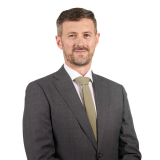Statutory liability for defective products: The Consumer Protection Act 1987 (the CPA) is the principal UK legislation governing liability for defective products.
The CPA, and the case law that has developed around it, determine key issues such as:
- What factors are relevant to establishing that a product has a 'defect', i.e. how do you decide whether 'the safety of the product is not such as persons generally are entitled to expect';
- What types of liability can arise in respect of defective products, covering civil liability (and the obligation to pay damages) for death, personal injury or damage to property caused by defective products, as well as criminal liability for failure to comply with consumer safety requirements;
- Which entities in the supply chain can incur liability, covering the original manufacturer of a manufactured product, any entity that 'own-brands' the product (by supplying it under the own-brander's own name or trade mark), and any entity that has imported the product into the UK – any of which can be held liable on a 'primary' basis – but also potentially covering any other entity in the supply chain that receives a claim and is unable to identify to the claimant one of the entities with primary liability within a reasonable period of time; and
- What defences are available in response to a product liability claim, including, for example, the defence that the defect did not exist in the product at the time of supply.
Other bases for a claim in respect of defective products: Alongside the statutory regime governed by the CPA in respect of defective products, manufacturers could also incur liability in respect of products they have manufactured as a result of a common law claim in negligence – which would be based on the argument that the manufacturer had failed to satisfy a duty of care to the user of the product – or a claim for breach of contract brought by the buyer of the product.
The statutory liability for breaches of product safety requirements: A separate statutory regime in respect of product safety, governed by the General Products Safety Regulations 2005 (the GPSR) in the UK, runs alongside the CPA regime in respect of defective and unsafe products.
The GPSR creates a range of criminal offences for supplying consumer products which fail to meet the statutory definition of being 'safe' and for a range of other breaches in respect of consumer safety.
Many categories of products (drugs and medical devices, food, electrical equipment, toys etc.) are subject to their own specific regulatory safety regimes, which apply in place for the GPSR, save to the extent that the requirements of the GPSR go beyond the requirements of the product-specific regime.





